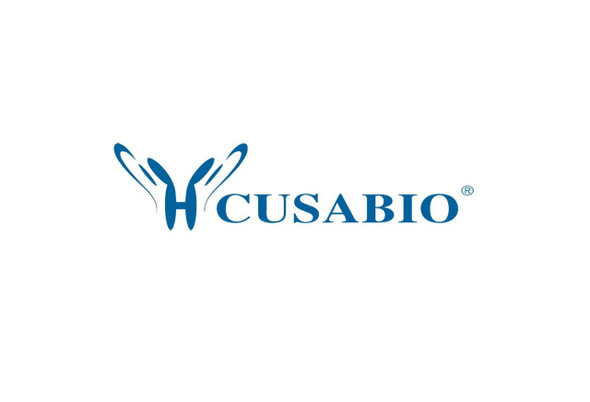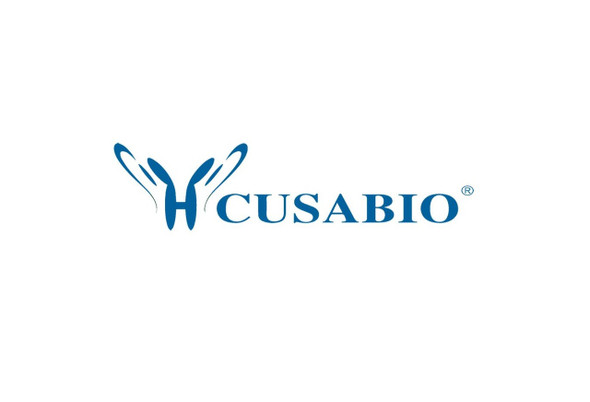Cusabio Virus & Bacteria Recombinants
Recombinant Sudan ebolavirus Envelope glycoprotein (GP), partial | CSB-EP742487SRE
- SKU:
- CSB-EP742487SRE
- Availability:
- 13 - 23 Working Days
Description
Recombinant Sudan ebolavirus Envelope glycoprotein (GP), partial | CSB-EP742487SRE | Cusabio
Alternative Name(s): Envelope glycoprotein(GP1,2)(GP) [Cleaved into: GP1; GP2; Shed GP(GP1,2-delta)]
Gene Names: GP
Research Areas: Others
Organism: Sudan ebolavirus (strain Uganda-00) (SEBOV) (Sudan Ebola virus)
AA Sequence: QTNTKATGKCNPNLHYWTAQEQHNAAGIAWIPYFGPGAEGIYTEGLMHNQNALVCGLRQLANETTQALQLFLRATTELRTYTILNRKAIDFLLRRWGGTCRILGPDCCIEPHDWTKNITDKINQIIHDFIDNPLPN
Source: E.coli
Tag Info: N-terminal 6xHis-KSI-tagged
Expression Region: 502-637aa
Sequence Info: Partial
MW: 30.8 kDa
Purity: Greater than 85% as determined by SDS-PAGE.
Relevance: [Envelope glycoprotein]: Trimeric GP1,2 complexes form the virion surface spikes and mediate the viral entry processes, with GP1 acting as the receptor-binding subunit and GP2 as the membrane fusion subunit. At later times of infection, downregulates the expression of various host cell surface molecules that are essential for immune surveillance and cell adhesion. Down-modulates several integrins including ITGA1, ITGA2, ITGA3, ITGA4, ITGA5, ITGA6, ITGAV and ITGB1. This decrease in cell adhesion molecules may lead to cell detachment, contributing to the disruption of blood vessel integrity and hemorrhages developed during infection (cytotoxicity). Interacts with host TLR4 and thereby stimulates the differentiation and activation of monocytes leading to bystander death of T-lymphocytes. Downregulates as well the function of host natural killer cells. Counteracts the antiviral effect of host BST2/tetherin that restricts release of progeny virions from infected cells. However, cooperates with VP40 and host BST2 to activate canonical NF-kappa-B pathway in a manner dependent on neddylation.; [Shed GP]: Functions as a decoy for anti-GP1,2 antibodies thereby contributing to viral immune evasion. Interacts and activates host macrophages and dendritic cells inducing up-regulation of cytokine transcription. This effect is mediated throught activation of host TLR4.; [GP1]: Responsible for binding to the receptor(s) on target cells. Interacts with CD209/DC-SIGN and CLEC4M/DC-SIGNR which act as cofactors for virus entry into dendritic cells (DCs) and endothelial cells (By similarity). Binding to the macrophage specific lectin CLEC10A also seems to enhance virus infectivity (By similarity). Interaction with FOLR1/folate receptor alpha may be a cofactor for virus entry in some cell types, although results are contradictory (By similarity). Members of the Tyro3 receptor tyrosine kinase family also seem to be cell entry factors in filovirus infection (By similarity). Once attached, the virions are internalized through clathrin-dependent endocytosis and/or macropinocytosis. After internalization of the virus into the endosomes of the host cell, proteolysis of GP1 by two cysteine proteases, CTSB/cathepsin B and CTSL/cathepsin L removes the glycan cap and allows GP1 binding to the host entry receptor NPC1. NPC1-binding, Ca(2+) and acidic pH induce a conformational change of GP2, which unmasks its fusion peptide and permit membranes fusion (By similarity).; [GP2]: Acts as a class I viral fusion protein. Under the current model, the protein has at least 3 conformational states: pre-fusion native state, pre-hairpin intermediate state, and post-fusion hairpin state. During viral and target cell membrane fusion, the coiled coil regions (heptad repeats) assume a trimer-of-hairpins structure, positioning the fusion peptide in close proximity to the C-terminal region of the ectodomain. The formation of this structure appears to drive apposition and subsequent fusion of viral and target cell membranes. Responsible for penetration of the virus into the cell cytoplasm by mediating the fusion of the membrane of the endocytosed virus particle with the endosomal membrane. Low pH in endosomes induces an irreversible conformational change in GP2, releasing the fusion hydrophobic peptide.
Reference: Rapid diagnosis of Ebola hemorrhagic fever by reverse transcription-PCR in an outbreak setting and assessment of patient viral load as a predictor of outcome.Towner J.S., Rollin P.E., Bausch D.G., Sanchez A., Crary S.M., Vincent M., Lee W.F., Spiropoulou C.F., Ksiazek T.G., Lukwiya M., Kaducu F., Downing R., Nichol S.T.J. Virol. 78:4330-4341(2004)
Storage: The shelf life is related to many factors, storage state, buffer ingredients, storage temperature and the stability of the protein itself. Generally, the shelf life of liquid form is 6 months at -20?/-80?. The shelf life of lyophilized form is 12 months at -20?/-80?.
Notes: Repeated freezing and thawing is not recommended. Store working aliquots at 4? for up to one week.
Function:
Involvement in disease:
Subcellular Location:
Protein Families:
Tissue Specificity:
Paythway:
Form: Liquid or Lyophilized powder
Buffer: If the delivery form is liquid, the default storage buffer is Tris/PBS-based buffer, 5%-50% glycerol. If the delivery form is lyophilized powder, the buffer before lyophilization is Tris/PBS-based buffer, 6% Trehalose, pH 8.0.
Reconstitution: We recommend that this vial be briefly centrifuged prior to opening to bring the contents to the bottom. Please reconstitute protein in deionized sterile water to a concentration of 0.1-1.0 mg/mL.We recommend to add 5-50% of glycerol (final concentration) and aliquot for long-term storage at -20?/-80?. Our default final concentration of glycerol is 50%. Customers could use it as reference.
Uniprot ID: Q7T9D9
HGNC Database Link: N/A
UniGene Database Link: N/A
KEGG Database Link: N/A
STRING Database Link: N/A
OMIM Database Link: N/A






